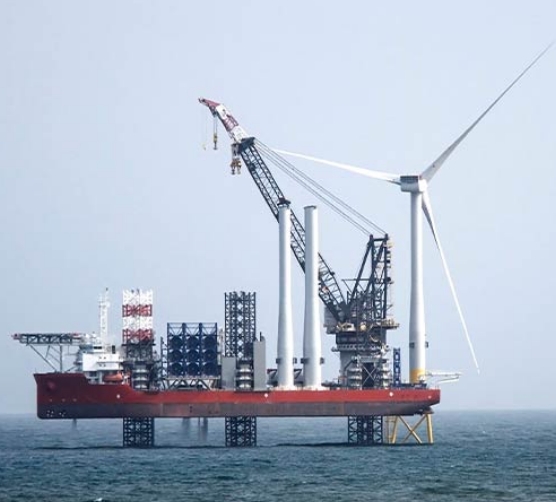A Comprehensive Guide to Understanding Offshore Construction
Offshore construction is an indispensable and intricate aspect of the global energy landscape, particularly within the oil and gas sector. It encompasses a range of activities spanning from preparation and design to transportation and installation of various offshore structures and facilities. These constructions, including oil rigs, drilling platforms, and production facilities, are essential for accessing and harnessing hydrocarbon resources from beneath the seabed. In this article, we'll explore the significance of offshore construction in the oil and gas industry, delve into its key components, address the challenges it faces, and highlight recent advancements in the field.

Significance of Offshore Construction
Offshore construction holds immense importance within the oil and gas industry for several reasons:
Resource Extraction: Offshore installations enable access to oil and natural gas reserves located beneath the seabed, significantly contributing to the global energy supply. They provide access to resources that are often inaccessible through onshore drilling methods.
Economic Contribution: Offshore oil and gas production generate substantial economic benefits, including job creation, revenue generation, and investment opportunities. It supports various industries, including engineering, construction, logistics, and maintenance.
Enhanced Energy Security: By diversifying oil and gas sources through offshore production, energy security is bolstered. This diversification reduces reliance on land-based reserves and helps meet the increasing energy demands of society.
Key Components of Offshore Construction
Offshore construction encompasses a multitude of crucial activities, including:
Offshore Platform Construction: Platforms serve as central hubs for drilling, production, and processing activities. These platforms, including fixed and floating variants, are tailored for specific offshore conditions.
Offshore Oil Rig Construction: Building offshore oil rigs involves meticulous planning, fabrication, transportation, and installation. These rigs are vital for exploration and extraction activities beneath the seabed.
Subsea Installations: Subsea infrastructure, including wellheads, pipelines, and flowlines, are essential for hydrocarbon extraction. Remote operation and advanced technologies like ROVs play a pivotal role in subsea installations.
Pipelines Construction: Pipelines are crucial for transporting offshore-produced oil and gas to onshore facilities. Design, materials, laying techniques, and maintenance are vital considerations in pipeline construction.

Challenges in Offshore Construction
Offshore construction faces various challenges, including harsh environmental conditions, logistical complexities, safety concerns, and environmental impacts. These challenges necessitate rigorous safety protocols, advanced technologies, and responsible practices to mitigate risks and ensure sustainability.
Recent Developments and Innovations
Recent advancements in offshore construction include digitalization, environmentally friendly practices, equipment testing, training using virtual reality, and cost optimization measures. These innovations improve operational efficiency, reliability, safety, and environmental sustainability within the offshore construction sector.
Conclusion
Offshore construction is a cornerstone of the energy industry, facilitating the extraction of vital resources from beneath the seabed. It requires precision, innovation, and a steadfast commitment to safety and environmental responsibility. By addressing challenges and embracing advancements, the offshore construction sector continues to drive progress and contribute significantly to global energy production.
- Sanat
- Doğa
- El sanatları
- Dans
- İçecekler
- Film
- Kondisyon
- Gıda
- Oyunlar
- Bahçıvanlık
- Sağlık
- Ev
- Edebiyat
- Müzik
- Networking
- Diğer
- Parti
- Din
- Alışveriş
- Spor Dalları
- Tiyatro
- Yaşam
